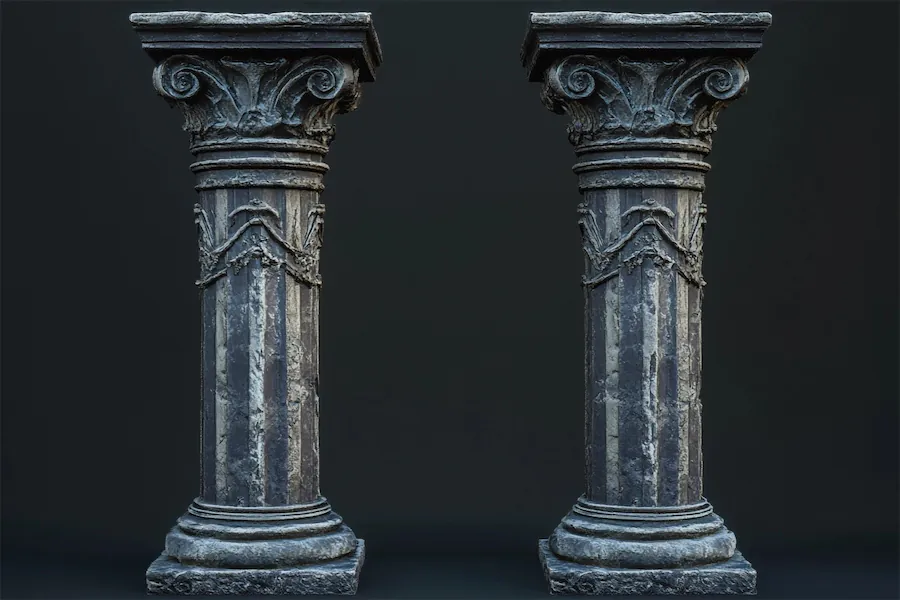Gothic columns are integral to Gothic architecture, a style that flourished in Europe from the mid-12th to the 16th century. This architectural style is characterized by its emphasis on verticality and light, aiming to inspire awe and elevate the viewer’s thoughts toward the divine.
History and Origins of Gothic Columns
Gothic architecture evolved from the Romanesque style, introducing innovative structural elements that allowed for taller and more light-filled buildings. The development of ribbed vaults and pointed arches enabled the redistribution of weight from the walls to the columns, facilitating larger windows and more open interior spaces.
Key Features of Gothic Columns
Gothic columns exhibit several distinctive features:
- Slenderness and Height: Designed to draw the eye upward, Gothic columns are tall and thin, contributing to the soaring heights of cathedrals and churches.
- Clustered Columns: Often composed of a central core surrounded by attached shafts or colonettes, these clustered columns support the complex ribbed vaults and enhance the sense of verticality.
- Ornate Capitals: The capitals atop Gothic columns are frequently adorned with intricate carvings, including foliage, biblical scenes, or symbolic motifs, reflecting the craftsmanship of the era.
Applications of Gothic Columns
Gothic columns were primarily utilized in religious and monumental architecture:
- Cathedrals and Churches: Serving both structural and aesthetic purposes, these columns supported the nave and aisles, creating expansive and inspiring interior spaces.
- Cloisters and Monasteries: In monastic settings, Gothic columns framed courtyards and walkways, contributing to the serene and contemplative atmosphere.
Considerations When Choosing Gothic Columns
When incorporating Gothic columns into architectural designs, consider the following:
- Structural Functionality: Ensure that the columns are appropriately designed to bear the intended loads, particularly when supporting ribbed vaults or arches.
- Aesthetic Consistency: The design of the columns, including their proportions and decorative elements, should harmonize with the overall Gothic style of the building.
- Material Selection: Traditionally constructed from stone, modern interpretations may use alternative materials; however, the choice should respect the historical context and desired visual effect.
Conclusion
Gothic columns are a testament to the architectural innovation of the Middle Ages, embodying the spiritual aspirations and artistic achievements of the period. Their distinctive features continue to influence architectural designs, symbolizing strength, grace, and a connection to the divine.
